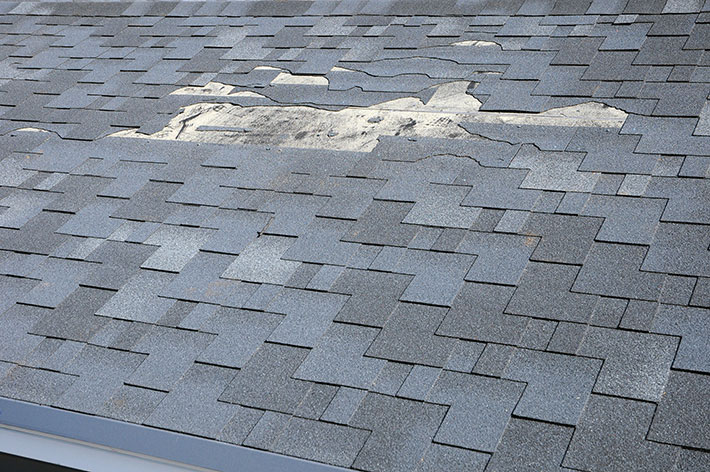
Even the most well-maintained home is vulnerable to storm damage. High winds, falling trees and intense hail can wreak all kinds of havoc. The most severe storm damage is often to the roof.
Knowing the signs of storm damage to your roof is important the safety and value of your home.
It’s easy to take your roof for granted. But the truth is, roofs need maintenance and repair, just like your windows and HVAC unit. The best defense against storm damage to your roof is a regular maintenance program. Like most things, your roof has a better chance of warding off damage when it’s in tip-top shape.
Nevertheless, mother nature often throws her worst at your roof, making damage unavoidable. Storm damage is serious, but it’s also usually covered by insurance. When you have storm damage, be sure to file your claim as soon as possible. Most insurance companies require the homeowner to file the claim within one year or less. It pays to know the time limits on your policy. Regardless of insurance requirements, roof repair after storm damage should always be undertaken without delay. Steps to mitigate the damage can be taken even before an insurance claim is approved and repair begins.
What is storm damage
Storm damage is in a different category versus normal wear and tear. Roofs, just like vehicles, deteriorate over time and require maintenance and parts replacements. As the roof ages, more problems emerge. Most roofs last between 20 and 25 years, provided they never suffer storm damage so severe that replacement is necessary.
When filing an insurance claim, it’s essential to establish that the damage occurred as the direct result of a storm. Like auto insurance policies, the damage must be due to an accident, not because of normal wear and tear. A roofing expert can tell the difference between wear and tear and storm damage. Knowing this difference can prevent the homeowner from filing a claim unnecessarily but also prove a valid claim.
Damage mitigation
After a storm damages a roof, it’s important to for the homeowner to respond quickly to mitigate damages. Even if the roof needs replacement, mitigation must be practiced to protect the rest of the structure. For example, missing shingles will allow rainwater to seep into the roof structure, which causes further damage. The water can then seep into the attic and make its way into the rest of the house. This causes structural damage and mold. A temporary repair program keeps the structure dry while an insurance claim is going through the approval process and repairs are being scheduled.
Signs that your roof sustained storm damage
After a storm, it’s hard to know if your roof sustained damage. If a bad storm hit, use these seven methods to determine if roof damage is likely:
Check the attic for ceiling leaks, water stains or even puddles on the floor. If you see any of these signs, storm damage has occurred. Take immediate action.
Inspect the gutters from ground level. You should be able to see if they are damaged or separated from the house. When gutter damage occurs, water gets into the structure through the roof siding.
Check around the downspouts for granule loss. The protective granules on the roof shingles may suffer erosion, especially on older roofs. Storms will often wear away these granules, which end up being drained through the gutters and downspouts.
Check for loose, missing warped or buckled shingles. Shingles are often destroyed in storms, making it impossible for your roof to function properly.
Search for loose spots, especially in the flashing. Flashing is the thin metal strips that seal parts of the roof that are vulnerable to leakage, such as chimneys and vents. Broken flashing will certainly result in leakage, which may be severe when the next storm strikes.
Look for pockmarks, which indicate hail damage. Both the roof and siding may be affected by hail.
When trees are down, its possible loose branches have damaged your roof. Even small branches can damage roof shingles, so check if any trees have fallen in the vicinity.
Storm damage to roofs is extremely common and no part of the country is immune. After a storm, always check your home for leaks and other signs of roof damage. When damage occurs, it’s important to take mitigating action, such as temporary repairs to stop leakage, and file an insurance claim as soon as possible. By doing so, you’ll save money, time and stress.
Seeking advice and an inspection from a trusted local roofing contractor is the best way to go. Most contractors offer Free roof inspections and estimates so make sure to shop around. 180 Contractors is a Michigan based home improvement company that specializes in roof repair and installation. Offering complimentary roof inspections and evaluations, 180 Contacting will ensure the best plan of action for your home, especially if your roof has suffered storm damage.
Contact us to learn more about our services such as window replacement, siding installation and repair and more! Maintaining the exterior of your home begins with a professional and reputable home improvement company. Call today for a Free on-site estimate!
